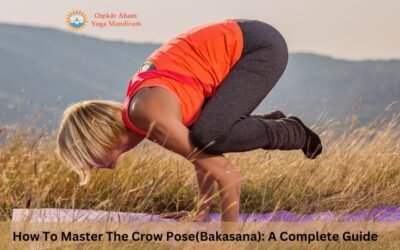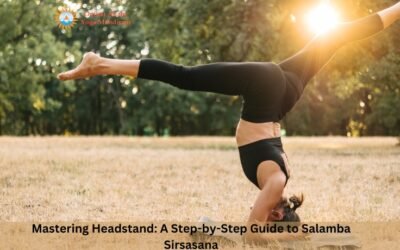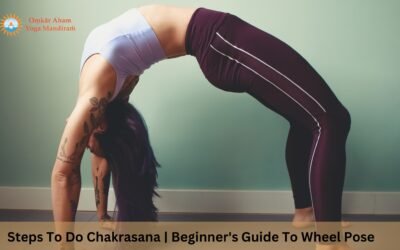Big Toe Pose, also understood as Padangusthasana, is a foundational yoga posture commonly practised in beginner and advanced yoga classes. This standing forward bend pose offers a range of benefits, including increased flexibility in the hamstrings and calves, improved digestion, and reduced stress and anxiety. In this complete guide, we will explore the benefits, alignment, modifications, and variations of Big Toe Pose, as well as its contraindications and tips for safe and effective practice.
Benefits Of Big Toe Pose
Big Toe Pose provides the practitioner with numerous physical, mental, and emotional benefits. Some of the key benefits include:
Physical Benefits
- Stretches and strengthens the hamstrings, calves, and hips.
- Increases flexibility in the spine and shoulders
- Improves digestion and metabolism
- Relieves tension in the neck, shoulders, and back
- Stimulates the abdominal organs and reduces bloating
Mental And Emotional Benefits

Big Toe Pose
- It calms the mind and reduces stress and anxiety.
- Improves focus and concentration
- Boosts energy levels and reduces fatigue
- Promotes a sense of grounding and stability
How To Practice Big Toe Pose
To practice Big Toe Pose, follow these step-by-step instructions:
- Begin standing in Tadasana (Mountain Pose) with your feet hip-width separated and your arms at your sides.
- Inhale and lift your arms overhead.
- Exhale and hinge forward from the hips, keeping your spine long and your chest lifted.
- Reach your hands towards the floor or the backs of your legs, placing your fingertips or palms on the ground or blocks.
- Pull your shoulders away from your ears and lengthen the back of your neck.
- Engage your quadriceps and press your heels down toward the floor.
- Hold the pose for 5-10 deep breaths.
- To release, inhale and slowly roll up to standing, stacking your vertebrae one by one.

Big Toe Pose Practice
Alignment And Modifications
Proper alignment is essential for a safe and effective practice of Big Toe Pose. Here are some alignment cues and modifications to keep in mind:
- Keep your knees barely bent if you have tight hamstrings or lower back pain.
- Place your hands on blocks if you can’t reach the floor.
- Use a strap around the balls of your feet if you can’t reach your toes.
- Keep your weight evenly spread between your feet, and avoid leaning forward or backwards.
- Entertain your core muscles and draw your navel towards your spine to protect your lower back.
- Keep your shoulders settled and away from your ears.
Variations Of Big Toe Pose
There are several variations of Big Toe Pose that you can explore as your practice progresses. Some of these variations include:
Extended Big Toe Pose (Utthita Padangusthasana)
- Stand with your feet hip-width apart and lift your right leg, bending your knee and holding onto your big toe with your right hand.
- Extend your right leg forward and straighten it, keeping your left hand on your hip or a block.
- Hold the pose for 5-10 deep breaths and repeat on the other side.
Revolved Big Toe Pose (Parivrtta Padangusthasana)
- Begin in the basic version of Big Toe Pose.
- Inhale and raise your left arm towards the ceiling.
- Exhale and rotate your torso to the right, placing your left hand on your right outer shin or ankle.
- Get your right arm towards the ceiling and gaze up at your fingertips.
- Hold the pose for 5-10 deep breaths and repeat on the other side.
Contraindications
As with any yoga posture, practising Big Toe Pose mindfully and with awareness of your body’s limitations is important. Avoid practising Big Toe Pose if you have any of the following conditions:
- Low back or hamstring injuries
- High blood pressure
- Migraines or headaches
- Dizziness or vertigo
- Pregnancy after the first trimester
If you are unsure whether Big Toe Pose is appropriate, consult a qualified yoga teacher or healthcare practitioner before practising.
Tips For A Safe And Effective Practice
Here are some tips to help you practice Big Toe Pose safely and effectively:
- Warm up your body with some gentle stretching and movement before practising Big Toe Pose.
- Practice on a non-slip surface, or use a yoga mat to avoid slipping.
- Use props such as blocks or straps to modify the pose and make it more accessible.
- Focus on your breath and allow it to guide you into and out of the pose.
- Practice with awareness and avoid pushing your body beyond its limits.
Conclusion
Big Toe Pose is a robust posture that offers the practitioner a range of physical, mental, and emotional benefits. By following the alignment cues and modifications outlined in this guide, you can practice Big Toe Pose safely and effectively while exploring its variations and experiencing its numerous benefits. Always listen to your body, respect its limitations, and practice with awareness and intention.
Join our 200 hour yoga teacher training Rishikesh. Contact us at
Call/WhatsApp: +91-9997744876
Mail us at: info@yogateachertrainingschool.com




















